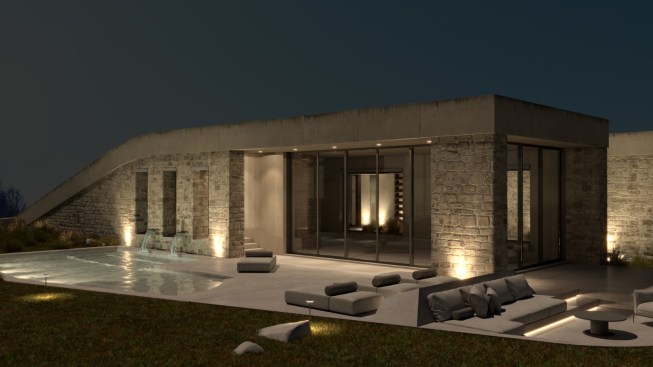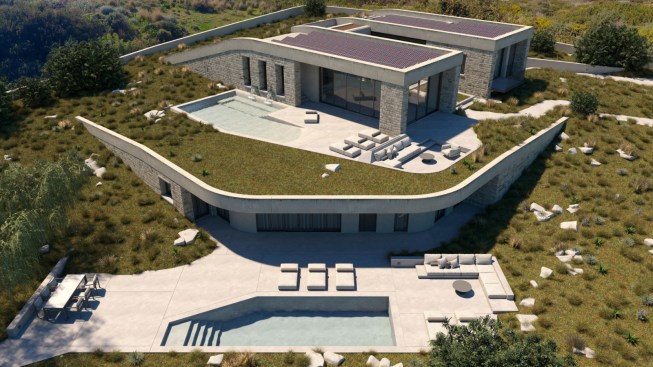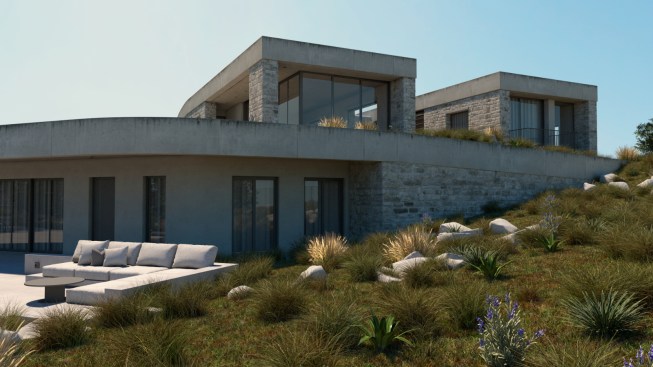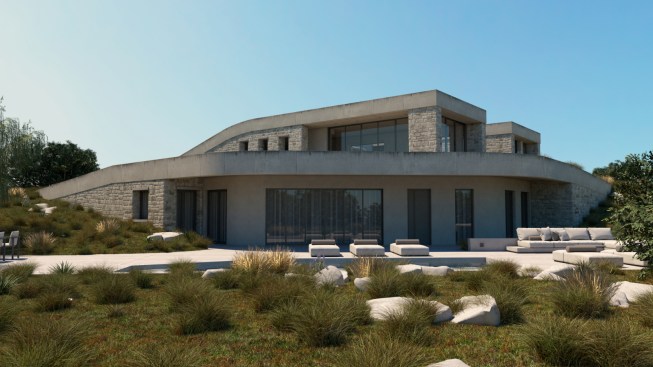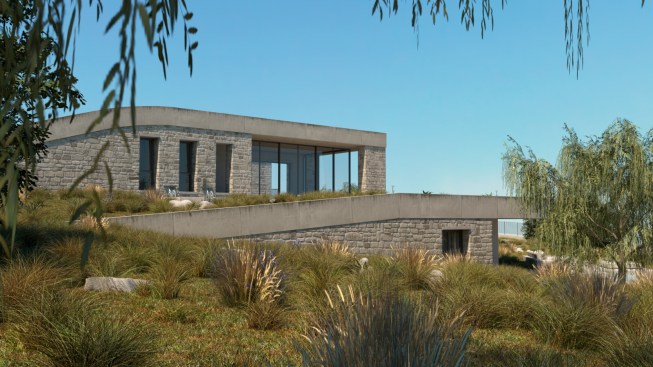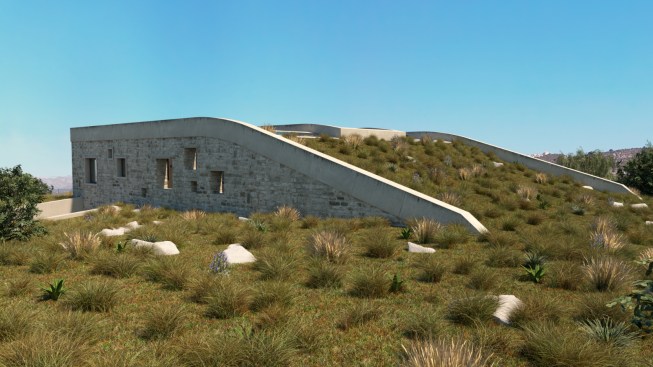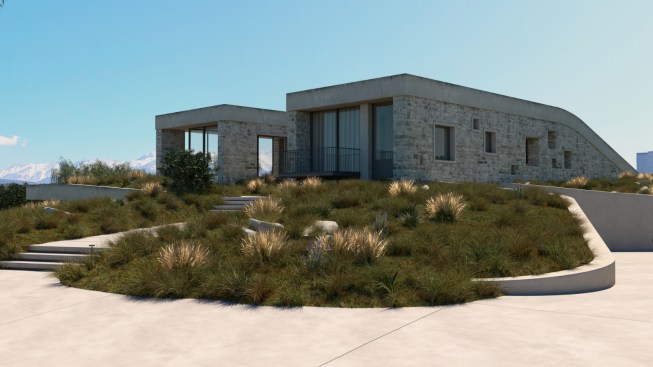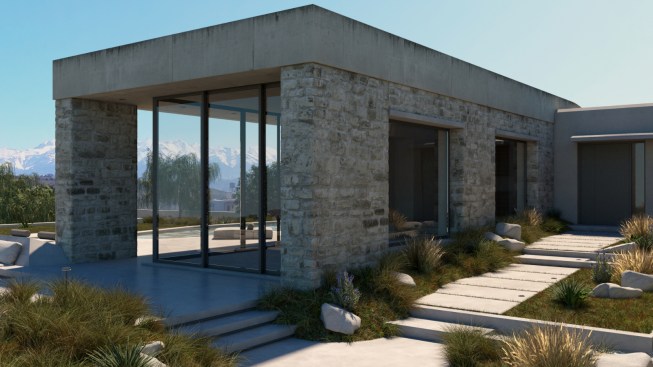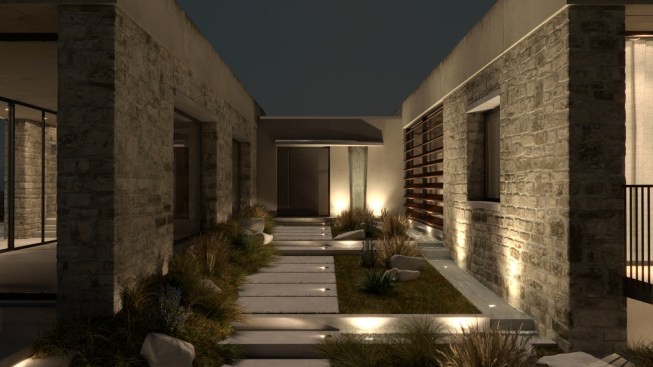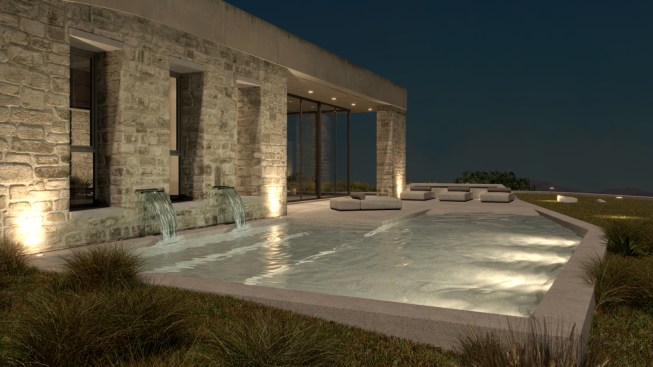Project Description
The 200m2 residence is located at Agios Onoufrios, in Chania area.
The main criteria for the architectural decisions made, were, from the East side the view towards Stavros mountain, from the South side the view towards the White Mountains and also the need for low energy footprint building designs (nearly zero energy buildings – nZEB).
One of the architectural design tools based on bioclimatic criteria, is the optimal use of the orientation, and more specifically of the Southeast orientation. As a result, the building’s volume is designed to fully exploit its potential.
More specifically, the main “π” shaped residence along with the underground guest house volume, maximize the southeast exposure of the building, while they are taking advantage of the different angle of the sun rays during the seasonal cycles.
On this direction, we created two basic solar spaces, one with stable shading and another one with rotating blinds and a mass- wall. The heating and cooling process takes place naturally, transferring the desired amount of heat to the individual areas of the house, ensuring heating comfort conditions. The big corner glass façade in the solar space, can slide and fully open, offering a semi-outdoor area during the summer months.
The water surfaces on the south walls, the planted roof, the hiding of the western light, the vertical ventilation shaft with the small openings towards the North side, and the controlled shading roof openings, operate in conjunction with the two spaces in order to achieve thermal comfort conditions. Additionally, the photovoltaic panels, the solar water heaters and the vertical heat exchange geothermal system, contribute to the minimization of the building’s ecological footprint.
The building’s perimeter wall, made of natural stone, is being utilized pointwise, due to its heat capacity, allowing this way the internal temperature optimization and visually integrating the house to its surroundings.
